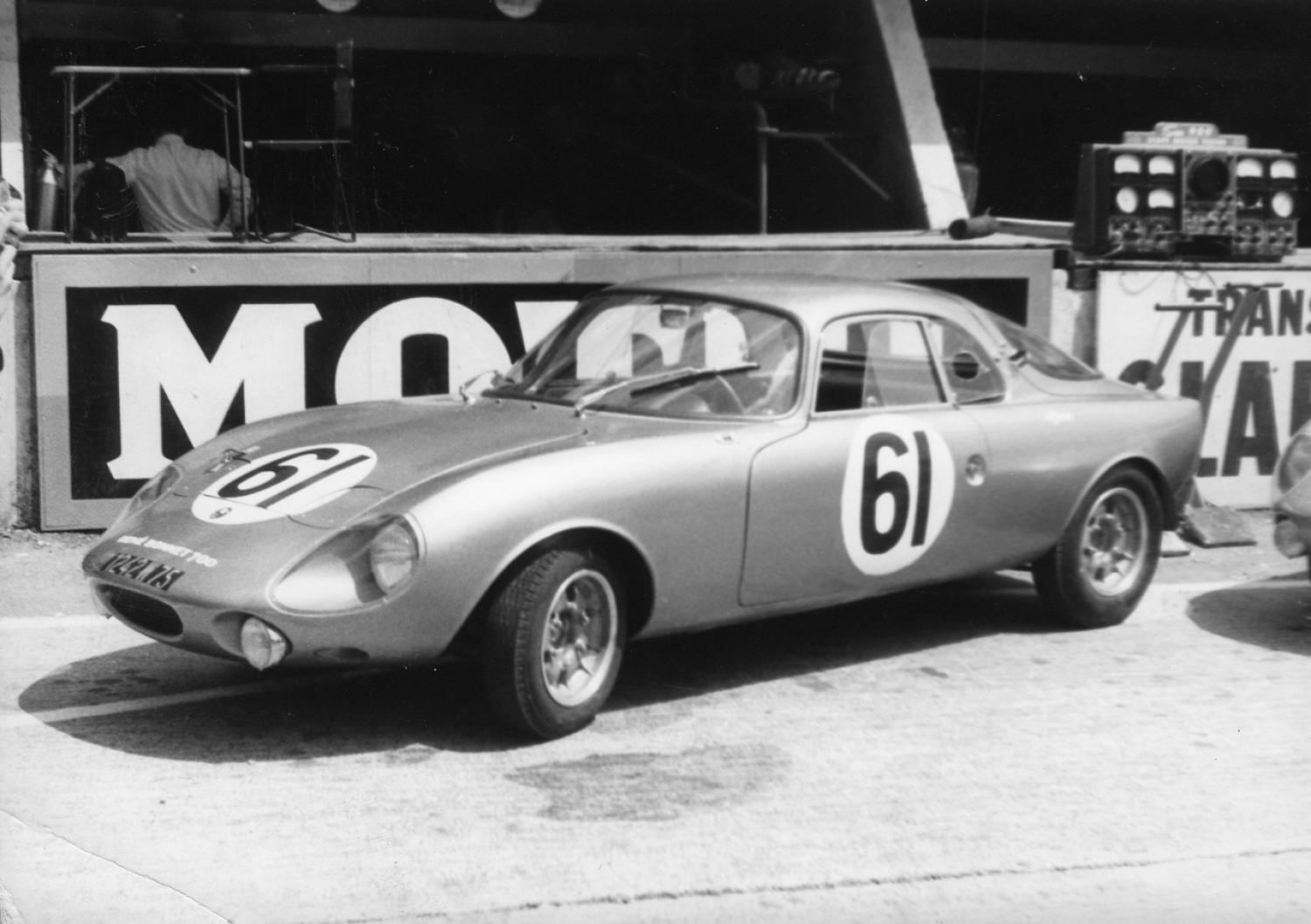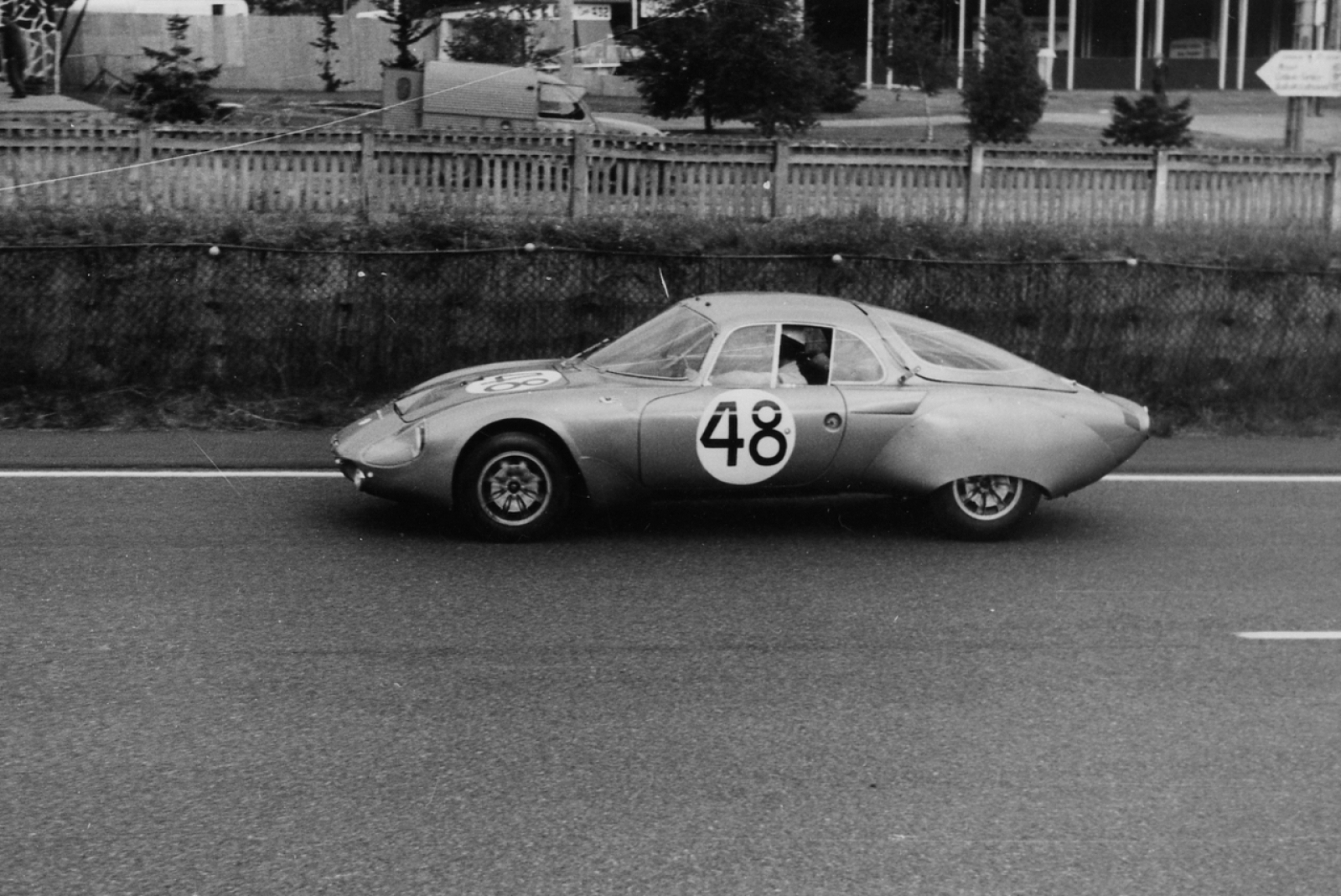24 HOURS CENTENARY – PERPETUAL INNOVATION ⎮ Among the smaller-engined cars that made their mark in La Sarthe in the 1960s, René Bonnet’s entry stands out as the first rear mid-engined car to take a class win at the 24 Hours of Le Mans. We take a look back at a historical achievement, which also owes much to Bonnet’s rivalry with Charles Deutsch, his former partner under the name DB.
Before the Second World War (1938), these two charismatic carmakers created the DB (Deutsche and Bonnet) marque which, until 1961 racked up victories in the performance index, later named the energy index, with fuel consumption sometimes as low as 8 litres for their 700 cm3 engines. With France seriously lacking resources at the time, Charles Deutsch (a Polytechnique graduate and aerodynamic engineer) and René Bonnet (an outstanding mechanic turned engineer) formed a winning duo that repeatedly sent the French national anthem ringing out during the podium ceremonies.
FRANCE’S OWN DB: FROM SUCCESS TO STRIFE
Both men triumphed as drivers in the cars they built, with respectively seven 24 Hours of Le Mans starts (including two class wins) for Bonnet and one for Deutsch. In 1962, however, the two strong-minded partners went their separate ways. Deutsch remained loyal to Panhard, then Peugeot when Panhard wound up its activities, while Bonnet placed his trust in Amédée Gordini, a specialist in Renault-supplied engines.
The former associates were now “at war” and supporters of both sides eagerly followed the 1962 24 Hours of Le Mans, the scene of their past exploits. Deutsch built four streamlined Panhard-powered coupés (700 cm3) with plastic bodywork, made by Carrosserie Chappe Frères et Gessalin in Brie-Comte-Robert, just outside Paris. Three of them were included in the official field, with the #70 as a reserve. They did a sterling job with drivers Bertaut and Guilhaudin taking the performance index trophy.
.
However, René Bonnet also turned up in La Sarthe with two sleek and stylish coupés, similarly built from fibreglass (weighing in at 544 kgs). They were powered by Renault Gordini 4-cylinder DOHC 1000 cm3 (996) engines based on the R8 produced for the Floride and Caravelle cars, paired with Renault gearboxes derived from the Estafette van. Eighteen cars were built with a multi-tube chassis with a fully independent suspension system on all four wheels. Three of them were prepared for Le Mans. Two were entered in the race but only one made it to the chequered flag (with only six kilometres between it and the CD!), finishing 17th. It was driven by José Rosinski (who went on to become a brilliant journalist) and Bernard Consten (who later became president of the Fédération Française du Sport Automobile). Although it was deprived of two of its four gears for half the race, it won the 851-1000 cc class.
RENÉ BONNET, FROM MID-ENGINE TO MATRA
Mounted on 13-inch alloy wheels, the René Bonnet put in a powerful performance despite only delivering 100 bhp, the position of the rear mid-engine (placed to the front of the rear wheel axle, a world first at the time) ensuring that the weight of the rear and front axles was evenly distributed. The fuel tank was positioned at the front along with a spare wheel, the side windows were made of Perspex and the huge bubble over the engine compartment was also made of plastic. Meanwhile placing the gearbox on the rear drive shaft under the floor made it possible to fit a second spare wheel if required. The other René Bonnet entered had a “small” 700 cm3 engine but still overheated. The #46 Le Mans class-winning car was rediscovered in a Parisian basement thirty years ago! It has been carefully restored and now lives happily in the 24 Hours of Le Mans Museum. It has been spruced up recently, ready to complete a few laps of the circuit next summer.
Having learnt from the previous year’s race, in 1963 René Bonnet abandoned the cutaway rear end and replaced it with a more imposing, elongated tail, earning the car the name Aérodjet. Three cars were run but met with varying degrees of success. The first car flipped over on the Dunlop curve. Fortunately, the driver was not seriously injured despite the lack of roll bar at that time. The second, driven by Robert Manzon, went off the track when it hit an oil slick on the Mulsanne Straight. The car’s body was cut in two, but Manzon escaped unscathed. In the hands of rising star Jean-Pierre Beltoise, the third car won the performance index. However, Beltoise had terrified the marshals at Mulsanne Corner, which he repeatedly negotiated on two wheels, as described in a detailed report to the race director.
In 1964, before the brand was bought by Matra, René Bonnet opted for a beam chassis powered by Renault Gordini 1000 to 1150 cc engines. It was a failure at the 24 Hours but the Matra Djet enjoyed a successful sales career. One of them was even gifted to Yuri Gagarin, the first man in Space.
PHOTOS: LE MANS (SARTHE, FRANCE), CIRCUIT DES 24 HEURES, FROM TOP TO BOTTOM (COPYRIGHT: ACO ARCHIVES): In 1962, the coupé and spider versions of the René Bonnet, with the first mid-engine (placed just before the rear axle) in the history of the 24 Hours, and above the 1964 Djet.



